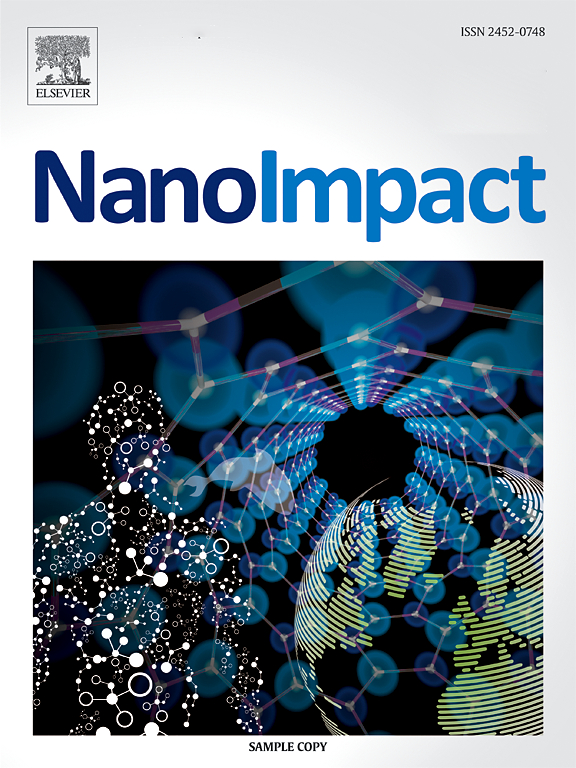导航纳米毒性:通过多组学整合揭示纳米材料诱导的效应
IF 5.5
3区 环境科学与生态学
Q2 ENVIRONMENTAL SCIENCES
引用次数: 0
摘要
纳米材料在工业和医学上的日益广泛使用引起了人们对其安全性的极大关注,特别是它们与生物系统的相互作用。传统的毒理学方法,具有有限的通量和机制的理解,越来越多地被组学技术补充。基因组学、转录组学、蛋白质组学和代谢组学为纳米材料毒性的分子机制提供了全面的见解,并使鉴定潜在的生物标志物成为可能。此外,单细胞和空间组学方法正在成为评估细胞和组织水平毒性的有力工具,揭示了纳米材料的异质反应和空间分布。尽管具有优势,组学技术在纳米毒理学领域仍面临挑战,包括庞大、复杂的数据集、集成困难和缺乏标准化协议。为了应对这些挑战,我们建议开发新的生物信息学工具、多组学集成平台和标准化分析过程,以提高研究效率和准确性。这些努力可以为整合组学技术的应用,包括单细胞和空间方法,在纳米材料毒性研究中提供一个实用的路线图。本文章由计算机程序翻译,如有差异,请以英文原文为准。

Navigating nanotoxicity: Unraveling nanomaterial-induced effects via multi-omics integration
The growing use of nanomaterials in industry and medicine raises significant concerns about their safety, particularly regarding their interactions with biological systems. Traditional toxicological methods, with limited throughput and mechanistic understanding, are increasingly being complemented by omics technologies. Genomics, transcriptomics, proteomics, and metabolomics provide comprehensive insights into the molecular mechanisms of nanomaterial toxicity and enable the identification of potential biomarkers. In addition, single-cell and spatial omics approaches are emerging as powerful tools to assess toxicity at the cellular and tissue levels, revealing heterogeneous responses and spatial distribution of nanomaterials. Despite their advantages, omics technologies face challenges in nanotoxicology, including large, complex data sets, integration difficulties, and a lack of standardized protocols. To address these challenges, we propose the development of new bioinformatics tools, multi-omics integration platforms, and standardized analysis processes to enhance research efficiency and accuracy. These efforts can provide a practical roadmap for integrating the application of omics technologies, including single-cell and spatial approaches, in the study of nanomaterial toxicity studies.
求助全文
通过发布文献求助,成功后即可免费获取论文全文。
去求助
来源期刊

NanoImpact
Social Sciences-Safety Research
CiteScore
11.00
自引率
6.10%
发文量
69
审稿时长
23 days
期刊介绍:
NanoImpact is a multidisciplinary journal that focuses on nanosafety research and areas related to the impacts of manufactured nanomaterials on human and environmental systems and the behavior of nanomaterials in these systems.
 求助内容:
求助内容: 应助结果提醒方式:
应助结果提醒方式:


